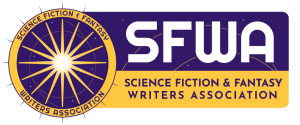by Anneke Schwob
Editor’s note: This piece is part of a rolling series, Writing from History, in which creators share professional insights related to the work of using historical elements in fictional prose.
I’ve spent a lot of time in archives and special collections: parsing handwritten letters, transcribing diaries, puzzling over telegraphs and radio transmissions. I was trying to write a dissertation. But inside the climate-controlled sterility of the reading room, I got lost instead, poring through a vast accumulation of details, swept up in the endless messy traces of human life. That willingness to become immersed wasn’t necessarily a good quality for a would-be academic. But now, some years later, I find myself reconsidering my time in the archives through the lens of writing fiction.
In this article, I’ll make the case for archival research as a tool for SFF writers. I’ll explain broadly what archives are and how to use them. But before diving into the how, I first want to spend a minute on the why.
Archives as Story Engines
Primary sources capture a wealth of specifics that most secondary sources necessarily elide. But archival research can be about much more than nailing the details. What if we approach the archives as a way to open gaps in our understanding–gaps into which story can enter—rather than close them?
One of my favorite anecdotes about archival research comes from historian Jill Lepore. Lepore was going through the papers of Noah Webster, who you may know from dictionaries. She begins by describing a fairly typical day: opening folder after folder and finding nothing particularly remarkable in any of them. Sometimes it’s like that.
She moves to the next folder—Box 3, Folder 18—expecting more of the same. Opening it, she discovers instead a lock of Noah Webster’s hair, cut by his daughter Eliza as a keepsake. Lepore is briefly overcome.
“Noah Webster was a miserable, irascible man,” she writes. “But his daughter had loved him.”
This story, about Eliza Webster cutting her father’s hair and slipping it into an envelope, where it would wait 200 years for Jill Lepore to empty it into her hand, isn’t about the archive’s power to change our understanding of history. Nothing new was learned, really. Not about Noah Webster, Eliza, or 19th-century practices of creating mementos. (They were obsessed with hair as keepsakes, but we already knew that.) Rather, it’s a story about how one historian briefly experienced everything that the archive couldn’t capture: a living moment between father and daughter, itself only one moment in two whole lifetimes full of them.
To me, that vast space of possibility is where the story lives.
If you too are interested in exploring those spaces of possibility, some orientation may help make the dive less intimidating.
What Are Archives?
Put simply—too simply—an archive exists to collect and preserve historical material. Often, though not exclusively, archives gather written traces of the past: letters, manuscripts, official records. (Though it’s worth noting that many special collections also include visual material such as photographs, or even physical objects—the Harry Ransom Center at UT Austin famously holds Edgar Allen Poe’s actual desk.)
By nature, archives preserve a much more complex and messy history than that written into narrative. That detail and scope can make archives an important tool for reinterpreting or recontextualizing the past, in fiction or nonfiction. Archival research can draw attention to voices and narratives that have been forgotten. But archives aren’t inherently radical or even neutral. Power and privilege continue to shape decisions about what is collected, and that same power, privilege, and legacies of oppression can affect the way those collections are handled and described.
Accessing the Archive
The Society of American Archivists lists a series of resources that can help you figure out where archival materials are held.
Before visiting an archive in person, familiarize yourself with its specific policies and procedures around accessing materials. There are some constants: most will only allow you to write with pencil, no archive is going to let you bring snack crumbs around their first-edition Leaves of Grass, etc. But each has quirks about things like technology in the reading room, how to put in requests for documents, and reproduction of archival material.
Visiting a physical archive may not be possible for reasons of distance, cost, or accessibility. Poring over papers in rooms that always seem too bright or too dark and, invariably, universally, too cold (anything to keep the books happy), is both physically and mentally taxing. However, that doesn’t necessarily mean that archival research itself is out of reach. Many archives have digitized large portions of their collections. Others will happily dispatch research assistants to scan documents and deliver them digitally.
But many collections are so large that their scope is described not just in folders or boxes but in linear feet. (The Ursula K. Le Guin collection at the University of Oregon, for example, is 140 linear feet—the length of half a football field.) So whether you’re visiting in person or trying to access documents online, how do you know which specific items to request?
Enter the finding aid. A finding aid (sometimes called a collection guide) is a digital road map to a collection’s holdings. Usually hosted on an institution’s website, a finding aid describes a collection’s broad historical and thematic scope as well as, crucially, what it doesn’t contain. They also provide an inventory of folders and boxes, with brief descriptions of what might be found in each. The finding aid for the Le Guin papers, for instance, tells us that the collection includes material related to both her career as an author and her private life. Further, it divides its materials into broad categories, such as correspondence, literary works, personal papers, and so on. The divisions aren’t always perfect, but they save time: a visitor looking for Le Guin’s handwritten draft of A Wizard of Earthsea is unlikely to be waylaid by her Master’s thesis.
The other great secret to archival success really shouldn’t be a secret at all: the archivists and research librarians who keep the whole show running. One constant among almost every librarian and archivist I’ve talked to is that they love to be asked. Many of them know their collections intimately and will be delighted to help you find material to work with.
Once you have your documents, sit with them. Let yourself get a little lost. Experience the stories you’re being told, as much as possible without the pressure of preconceived interpretation. Let the gaps emerge. Eventually, the story will rush in.
 Anneke is a lapsed academic, former robot impersonator, and lifelong enjoyer of the weird and fantastic. Their fiction has appeared in Strange Horizons and Baffling and is forthcoming from Nocturne and Kaleidotrope. In addition to their fiction, they have written on pulp SF and Antarctic exploration and are part of the review team at GrimDark magazine. Anneke can most often be found on a rocky shoreline, a cursed bog, or online at annekeschwob.info. Technically, though, they live in Montreal.
Anneke is a lapsed academic, former robot impersonator, and lifelong enjoyer of the weird and fantastic. Their fiction has appeared in Strange Horizons and Baffling and is forthcoming from Nocturne and Kaleidotrope. In addition to their fiction, they have written on pulp SF and Antarctic exploration and are part of the review team at GrimDark magazine. Anneke can most often be found on a rocky shoreline, a cursed bog, or online at annekeschwob.info. Technically, though, they live in Montreal.

